KNX communicates via various communication media to exchange the data between devices in the system;
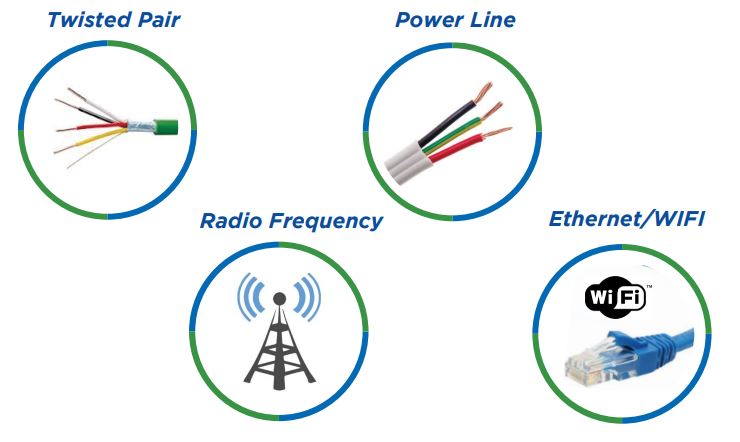
The technology is based on KNX TP which uses the twisted pair bus cable that enables all building functions to be interconnected, creating a single control system for the entire building.

The twisted pair KNX cable has an insulated sheath tested to 2.5kV isolation voltage so it can be laid with the building’s mains cables and wired as a line, tree, star structure or mixture of, as long as no loop is created.
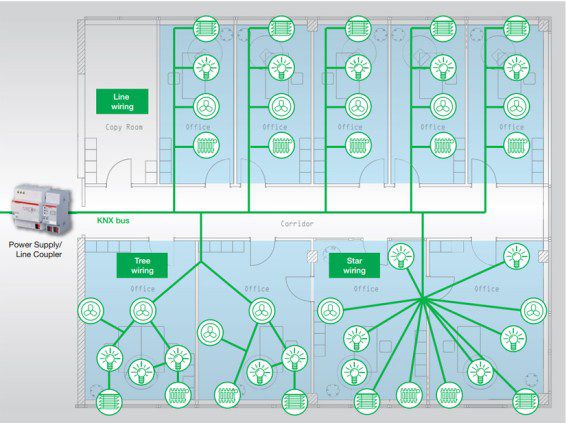
Within each KNX installation there are several types of devices;
All bus devices consist of a bus coupling unit (BCU) and an application module, which can either be made up of separate parts or combined together into a single device. The information that needs to be processed is transferred from the bus to the BCU, and a microprocessor carries out the function defined in the program.
A KNX device can be a maximum of 350m from a power supply, which would normally be mounted in a distribution board and the maximum length of bus cable used in a single line is 1000m and the maximum distance for two devices is 700m
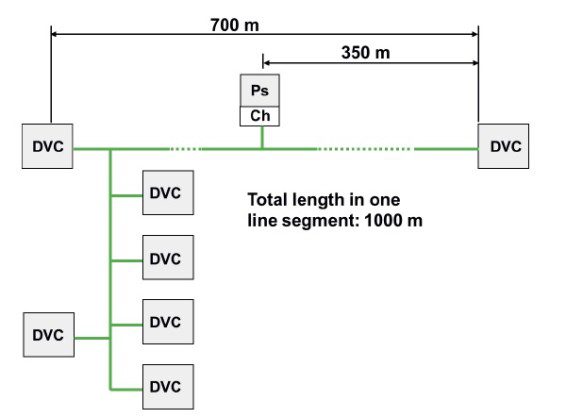
As long as all devices are on the KNX network within the specified structure parameters they will communicate with each other and will be interoperable, even if they are from different manufacturers.
The hierarchical structure of KNX architecture makes KNX suitable for use in any installation, and each installation is made up of lines, areas. A single KNX line can have up to 256 devices although the actual number depends on the size of the KNX power supply on the line and the total current of the devices.
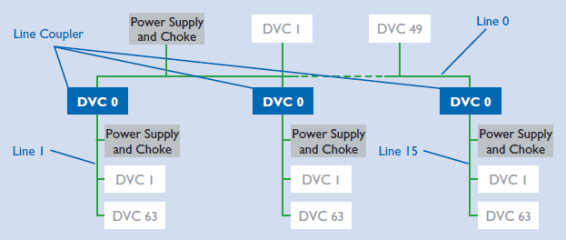
To expand the system beyond a single line, a hierarchy approach is used with each line up to a maximum of 15 lines, linking to a main line to create an area. Up to 15 areas can be added to an area line to form a complete system. The area line (also called the backbone) can accommodate up to 64 bus devices.
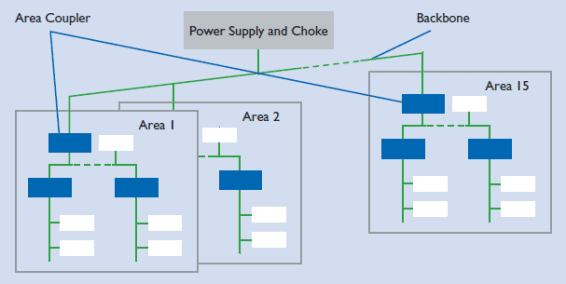
Using IP routers you can effectively turn an area into its own KNX ‘world’ and thereby create as many areas as required by the scale of the installation
Information is exchanged between devices (on lines and areas) as telegrams, transmitted symmetrically which gives a high level of noise immunity to the signal. The transmission speed is low at 9600b/s, but is sufficient for the required data traffic and avoids the need for terminating resistors, enabling any wiring topology to be used. For the system to operate effectively, data packets must be transmitted without colliding with other information. To achieve this, telegrams are organised so that they are transmitted when the bus is clear and automatically retransmitted if they are not received. And, because they are event-driven, telegrams are sent only when required, which minimises the traffic on the bus.
The telegram structures depends on the communication media used.
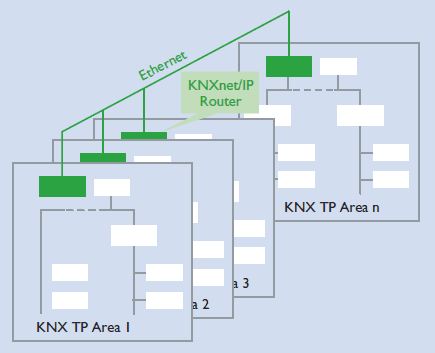
Control field: defines the priority of the telegram and whether or not transmission of the telegram was repeated (if the receiver did not respond).
Address field: specifies the Individual Address of the sender and the destination address (Individual Address or Group Address) of the receiver.
Data field: contains the telegram’s payload which can be up to 16 bytes long.
Checksum field: is used for parity checks.


KNX RF telegrams are made up of several data blocks separated by checksum (CRC) fields.
Data blocks: contain the actual payload as well as bus-specific information for addressing purposes.


Header Length: is always the same and may change in a later version of the protocol.
Protocol Version: indicates the version of the KNXnet/IP protocol.
Service Type Identifier: indicates the action that is to be carried out.
Total Length: indicates the total length of the KNXnet/IP telegram.
KNXnet/IP-Body: contains the payload.

While KNX technology is complex, the system is designed to be straightforward to implement, maintain and upgrade, and the Engineering Tool Software (ETS), developed by the KNX Association enables the designer and installer to assemble an installation that is independent of any manufacturer tie-ins.
If you require more information on the technology or help in specifying and designing a KNX system then please feel free to get in touch through our website or other social media platforms.